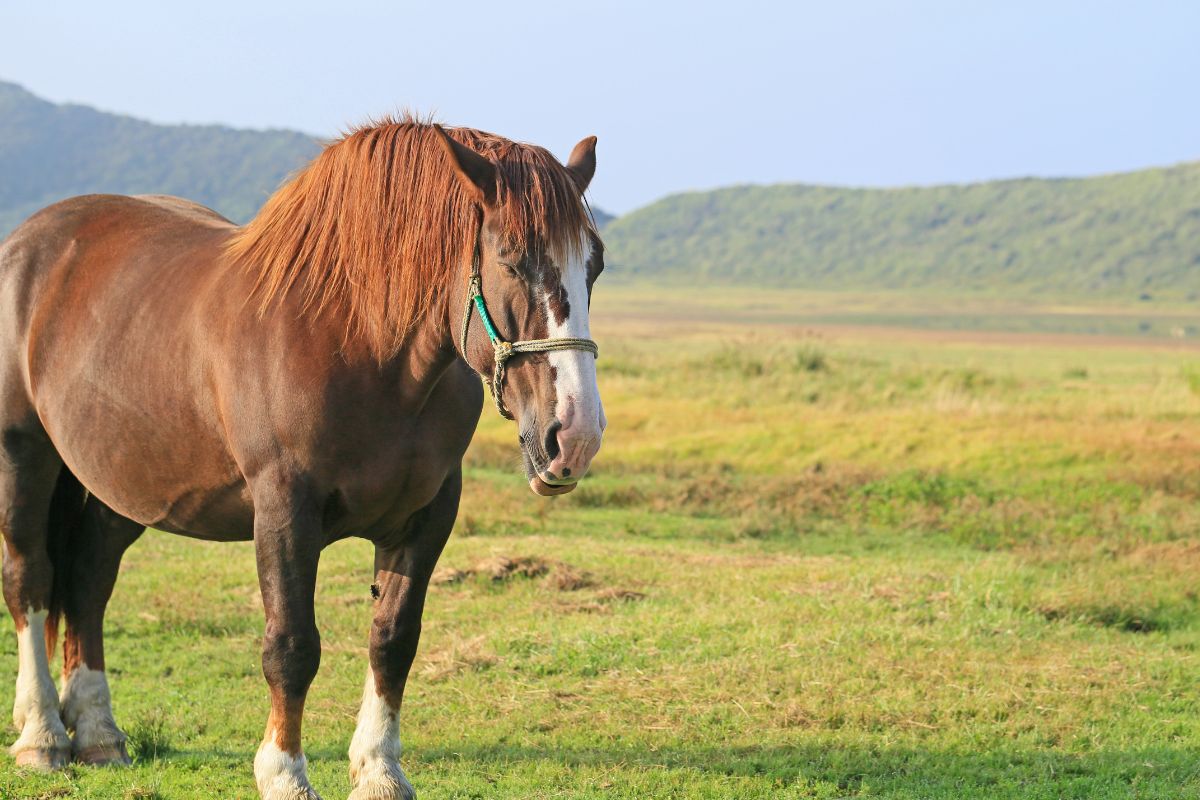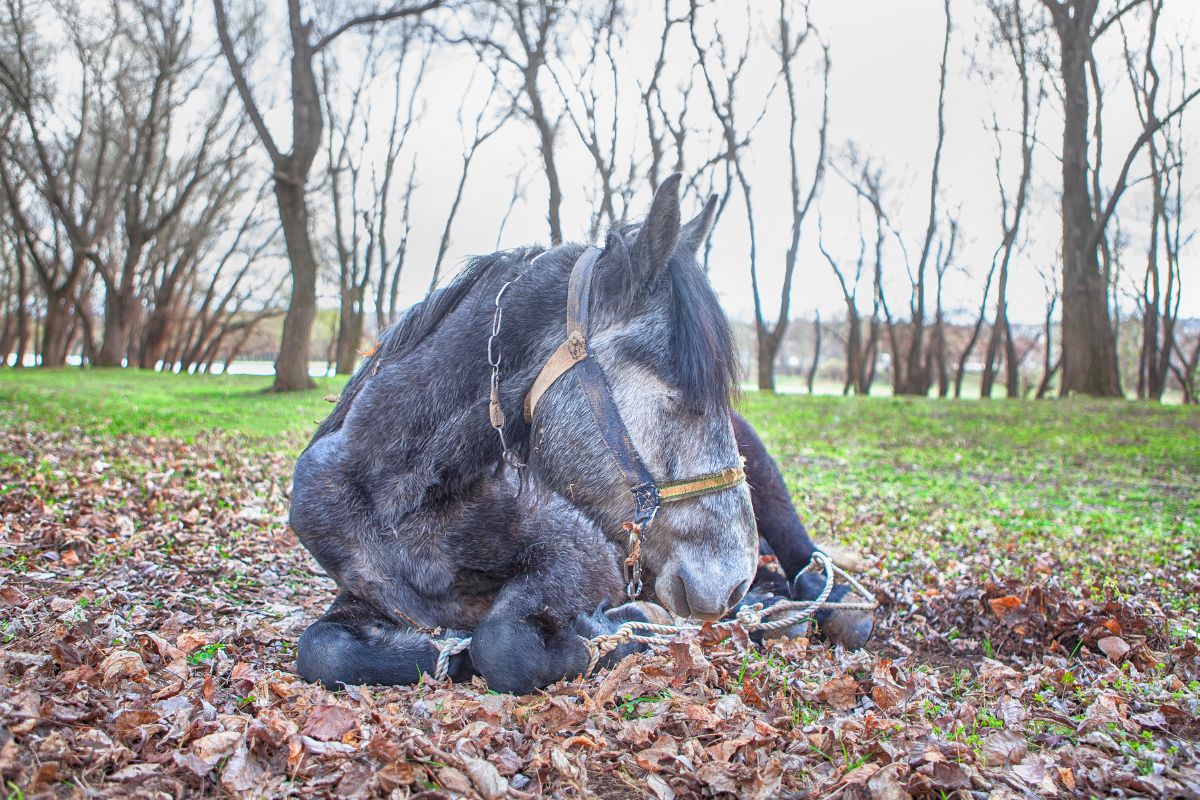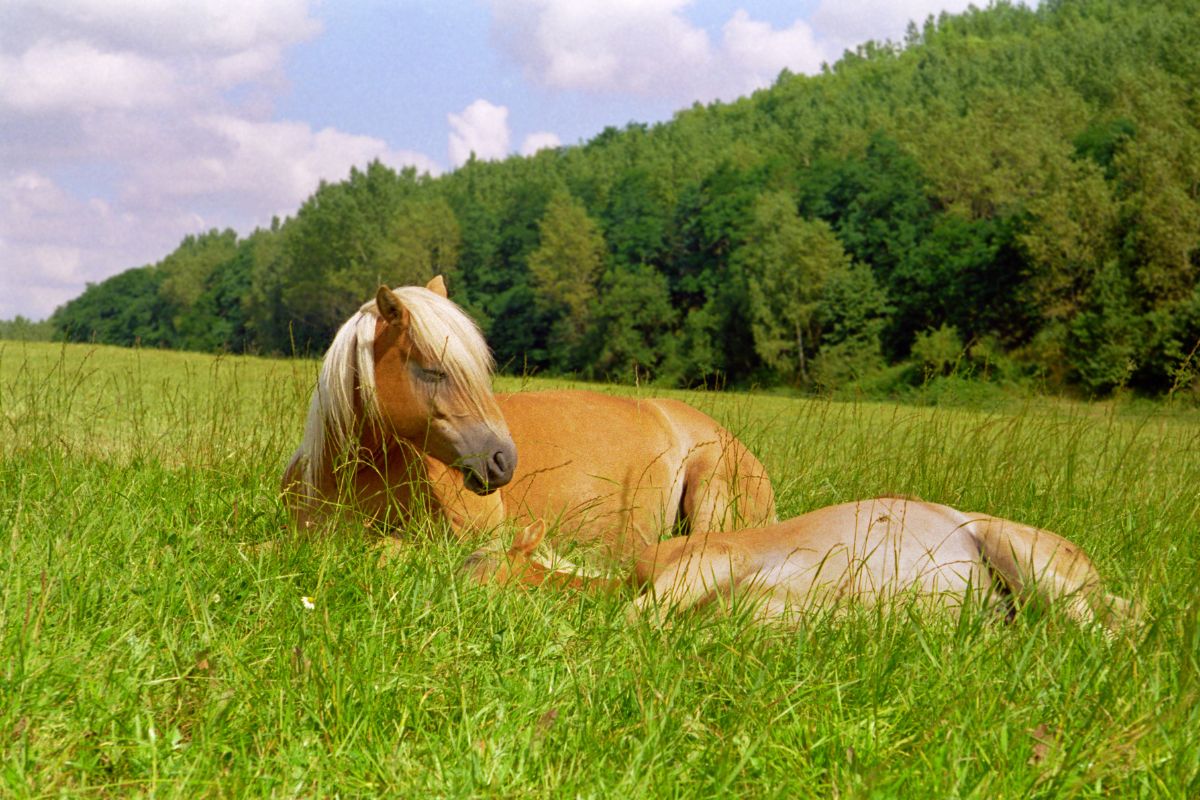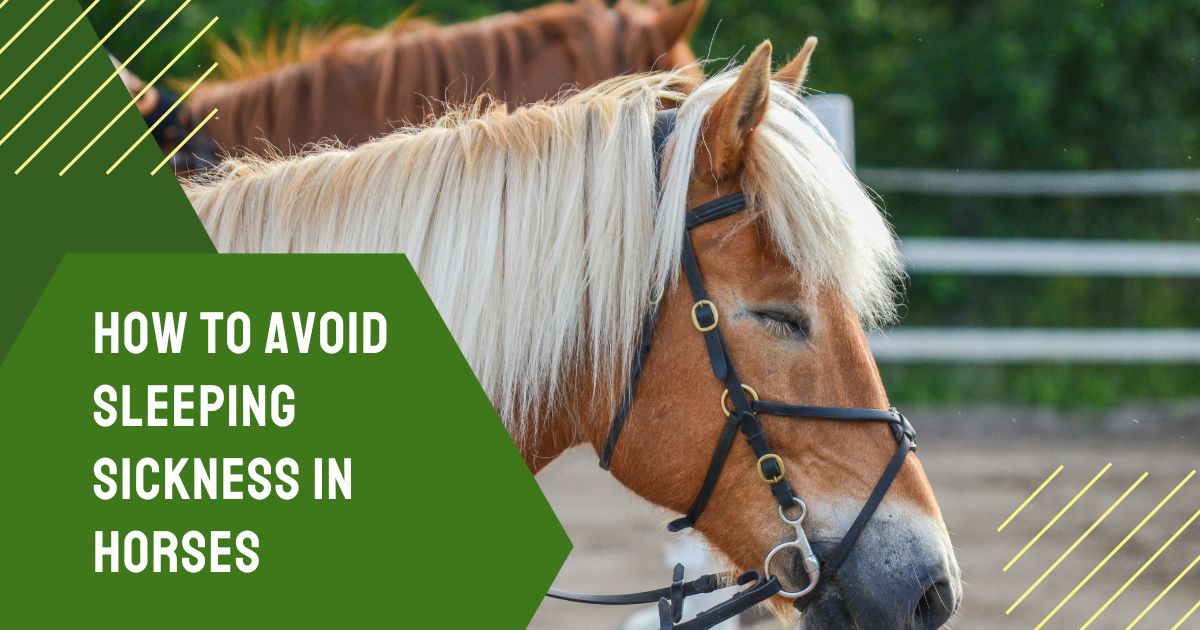What is Sleeping Sickness in Horses?
Equestrians won’t rest easy if the nightmare of sleeping sickness in horses becomes a part of their reality. Equine encephalitis (EE) is a viral disease transmitted by mosquitoes to horses with a high mortality rate depending on the viral variant contracted.
This deadly disease is most prevalent in late spring to early autumn when the mosquito vectors are most prevalent.

How Common is Equine Encephalitis?
The occurrence of equine encephalitis in the northeastern United States has steadily increased since 2003. Cases have escalated from less than one case per year to an average of eighteen veterinary cases and four to five human cases yearly. The veterinary cases are mostly equine patients.
Most cases occur from May to November, when mosquito season is at its peak. The researchers speculate that the increased number of cases is due to mild winters that do not kill off enough of the mosquito population and wet springs which create the ideal breeding conditions.
The Different Types of Equine Sleeping Sickness and Their Symptoms
Sleeping sickness in horses has three different viral strains:
- Eastern equine encephalitis (EEE).
- Western equine encephalitis (WEE).
- Venezuelan equine encephalomyelitis (VEE).
The virus causes encephalomyelitis, which includes inflammation of the brain and the spine. The first major documented EEEV outbreak occurred in 1933 along the coast of the Mid-Atlantic.
How common is EEE in comparison to WEE? EEE is the most prevalent strain of the encephalitis virus, but all three strains share common symptoms. The EEEV strains occur east of the Mississippi River across the United States and into Canada. WEE has a lower mortality rate.
EE may present with no symptoms for four to ten days while the virus incubates. The general symptoms of equine encephalitis may include peracute death or sudden severe neurological deterioration due to brain and spine inflammation. Between fifty to ninety percent of affected horses die.
Common additional symptoms of Eastern equine encephalitis in horses include:
- Fever.
- Diarrhea.
- In-coordination, depressed habitus, aimless wandering, and loss of balance.
- Reluctance or inability to move.
- Head-pressing or circling.
- Vision impairment.
- Decreased appetite or thirst.
- Paralysis.
- Seizures occur within 48–72 hours after the horse begins to show symptoms.
- Loss of consciousness or moribund mental state.

Is EEE Curable?
EEE has no cure because it is a viral disease. The only way to avoid infection is to prepare the immune system and prevent illness through vaccination and responsible horse husbandry.
Luckily, a vaccine is available, but owners must make a concerted effort to vaccinate their horses in endemic regions.
How is it Treated?
Viral infections do not have a specific treatment to stop the disease progression. The only way to address the disease progression is to try and administer supportive treatment to enable the horse’s immune system to fight the virus.
Supportive therapy for encephalomyelitis in horses includes intensive care at a hospital where intravenous fluid therapy, respiratory support, safe stabling, and round-the-clock nursing are available.
The administration of medications such as corticosteroids helps to decrease inflammation. Anticonvulsant drugs prevent seizures and the potential physical harm from convulsant episodes. Antiviral medication and antibiotics are not effective in treating EEE.
Horses that fully recover without secondary complications develop lifelong immunity against EEE.
EEE Preventative Measures
Preventative strategies for EEE require a combination of environmental control measures to minimize mosquito breeding and contact, active husbandry protocols for vaccinations, and decreased insect exposure.
Vector-borne diseases are increasing all over the world due to global warming and increased resistance to pesticides. A multimodal approach to mosquito control needs implementation in endemic areas to avoid or suppress potential EEE outbreaks.
Owners and stable managers must implement environmental management strategies to eliminate or chemically treat potential breeding sites for mosquitos. Stagnant water bodies near pastures and stables are high-risk breeding sites for vectors.
Environmental management includes the following steps:
- Regularly empty buckets of water or old feed bins, especially after rain.
- Add plants to swamp areas to decrease water-logged soils.
- Close off access to pastures or areas where horses graze near static or stagnant water sources.
- Redesign areas where drainage is poor to improve water runoff.
- Make use of natural predators of mosquito larvae, such as fish in ponds.
- Promote a balanced ecosystem using birds or bats to prey on mosquitoes.
- Clean and fill troughs regularly with fresh water and ensure that water tanks have tight seals.
- Chemical treatments pose a risk of promoting pesticide resistance, so carefully consider the chemicals used and alternate them regularly to avoid breeding resistant mosquitoes.
Stable managers or horse owners must ensure that stables are not open to the elements and that horses undergo regular treatments with insect repellents.
Vaccination is the best way to prepare any horse for an EEE challenge. The American Association of Equine Practitioners considers vaccinations for EEE and WEE to be core prophylaxis for all horses living in or traveling to North America.
The EEE / WEE vaccines offer enough protection to prevent severe morbidity and mortality if administered annually or every six months in high-risk areas. Some studies have shown that vaccinating against EEE and WEE leads to possible cross-immunity against VEE.
The vaccine consists of two separate doses. The primary vaccine administration can occur at any time of the year, but the best time is towards the end of autumn or the beginning of spring. The second dose booster must occur two to four weeks after the primary vaccine date.
Is the Virus Dangerous?
Eastern equine encephalitis is dangerous because it has serious and life-threatening effects on humans. Horses cannot spread the disease to people, and people cannot infect one another. Only mosquitoes carry the virus and transfer the infection of EEE to mammalian hosts.
Although rare, the danger of the virus lies in the severity of the disease it causes. A third of people infected with EEE die, and those who survive often suffer from secondary chronic physical and neurological complications. Two-thirds of EEE patients recover, but they show signs of mild to severe brain damage.
People at a high risk of contracting the virus live and work in outdoor settings or partake in regular outdoor activities in the vicinity of wooded swamp areas. People over the age of fifty and under the age of fifteen are more likely to develop a severe form of EEEV. Immunocompromised individuals face a death sentence if they contract the virus.
There are no vaccinations available for humans, so the only way to prevent infection with the EEE virus in endemic areas is to apply insect repellents, dress in long-sleeved shirts and pants when outdoors, and enforce environmental insect control measures.
Causes and Transmission
The cause of sleeping sickness in horses is an alphavirus from the Family Togaviridae. The primary EEE vector is Culiseta melanura, the black-tailed mosquito. The virus circulates among wild birds, rodents, and reptiles mainly. Humans and horses are incidental hosts as they cannot transmit the virus to other organisms.
The mosquitoes lay their eggs in wetlands, stagnant water sources, or swamps. The mosquitos bite an infected animal and transmit the virus to a human or equine host when they feed on their blood. Other biting insects, ticks, or nasal secretions can also transmit EEV.
The geographical distribution of high-risk EEE areas ranges from Southern Texas, California, Louisiana, Mississippi, Alabama, and the West Coast of Florida.

Final Verdict
Sleeping sickness in horses is preventable if owners comply with annual core vaccination requirements and strive to limit exposure to potential equine encephalitis vectors. EE is a severe and deadly virus for both humans and horses, so it is vital to monitor reported cases, especially if they are nearby.
The sudden onset and severity of the virus’s symptoms make EEE a frustrating and discouraging disease to treat. Prioritize your horse’s welfare in endemic regions and ensure they get their annual vaccinations. Read our article and find out What You Should Know About The Five-Way Horse Vaccine.
